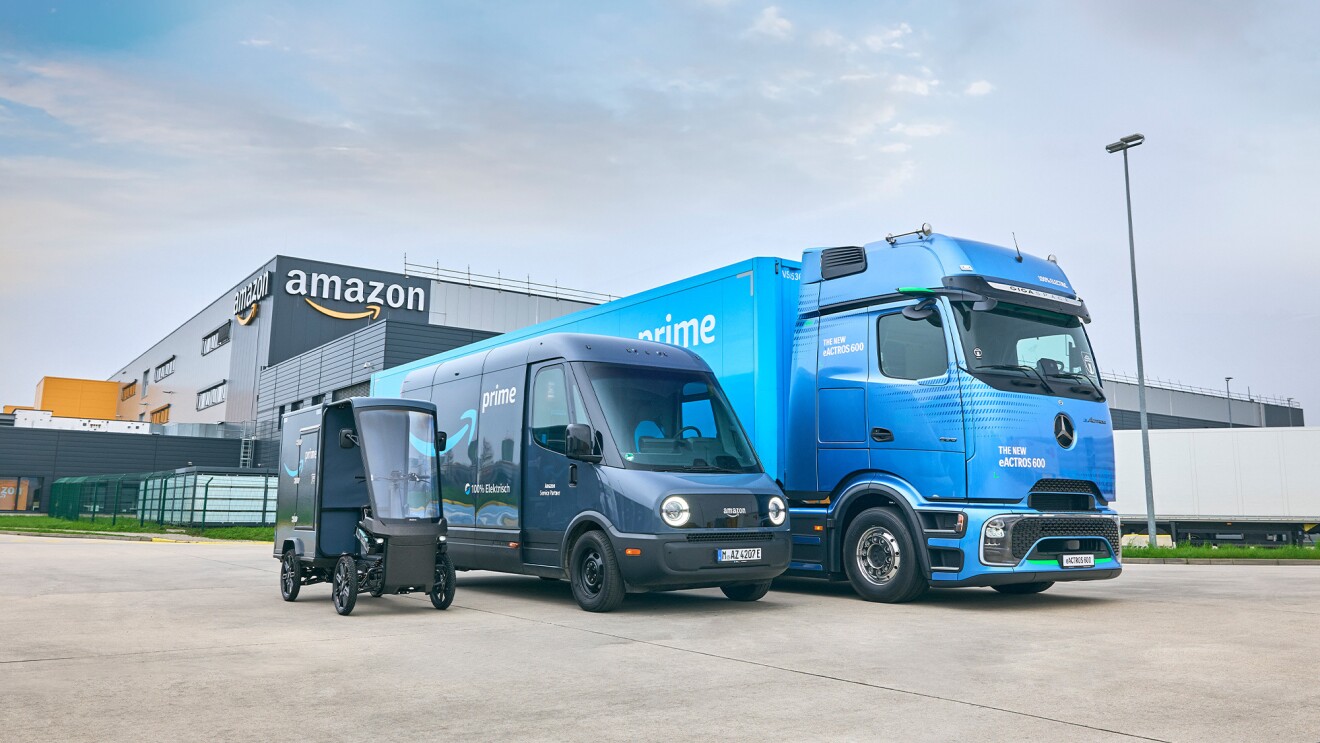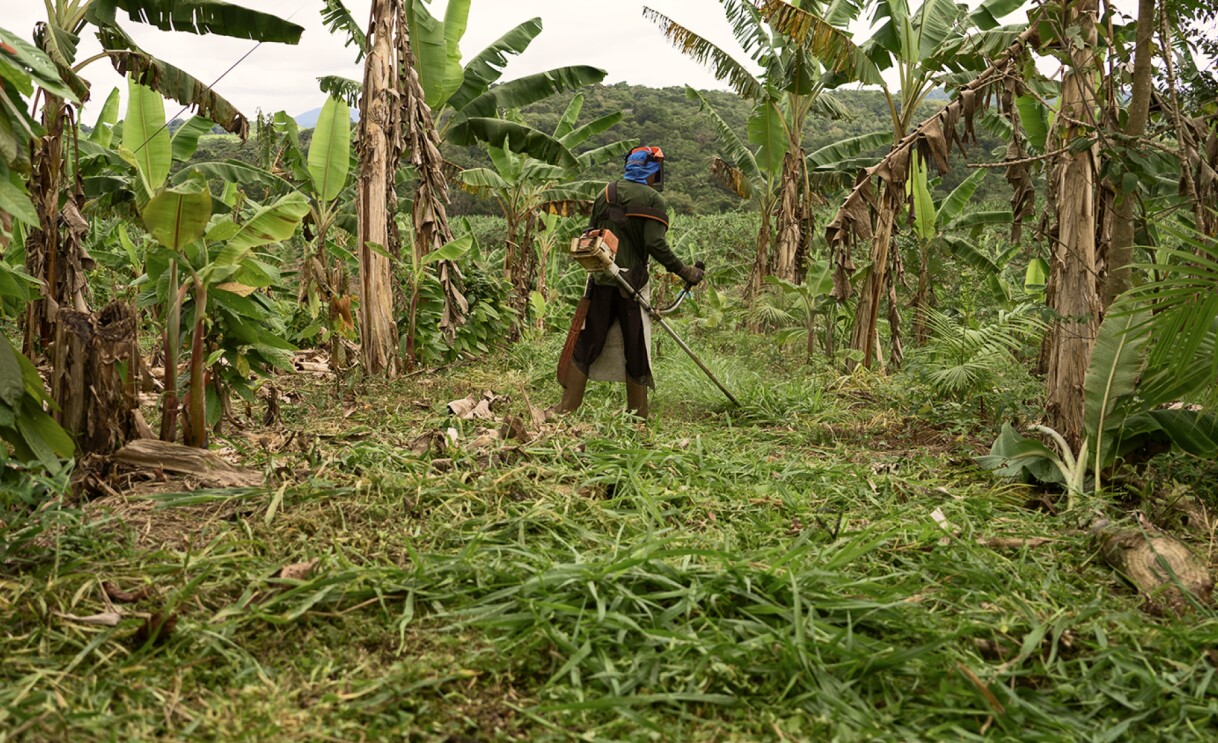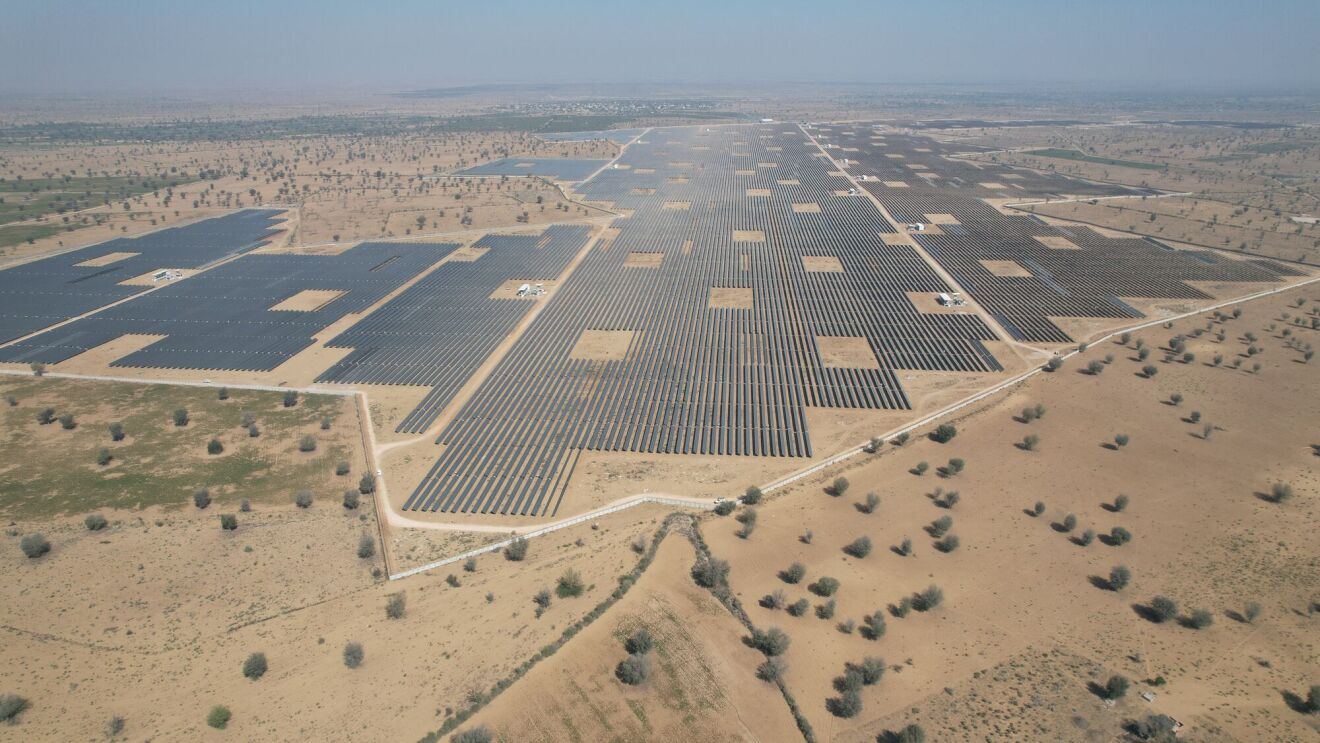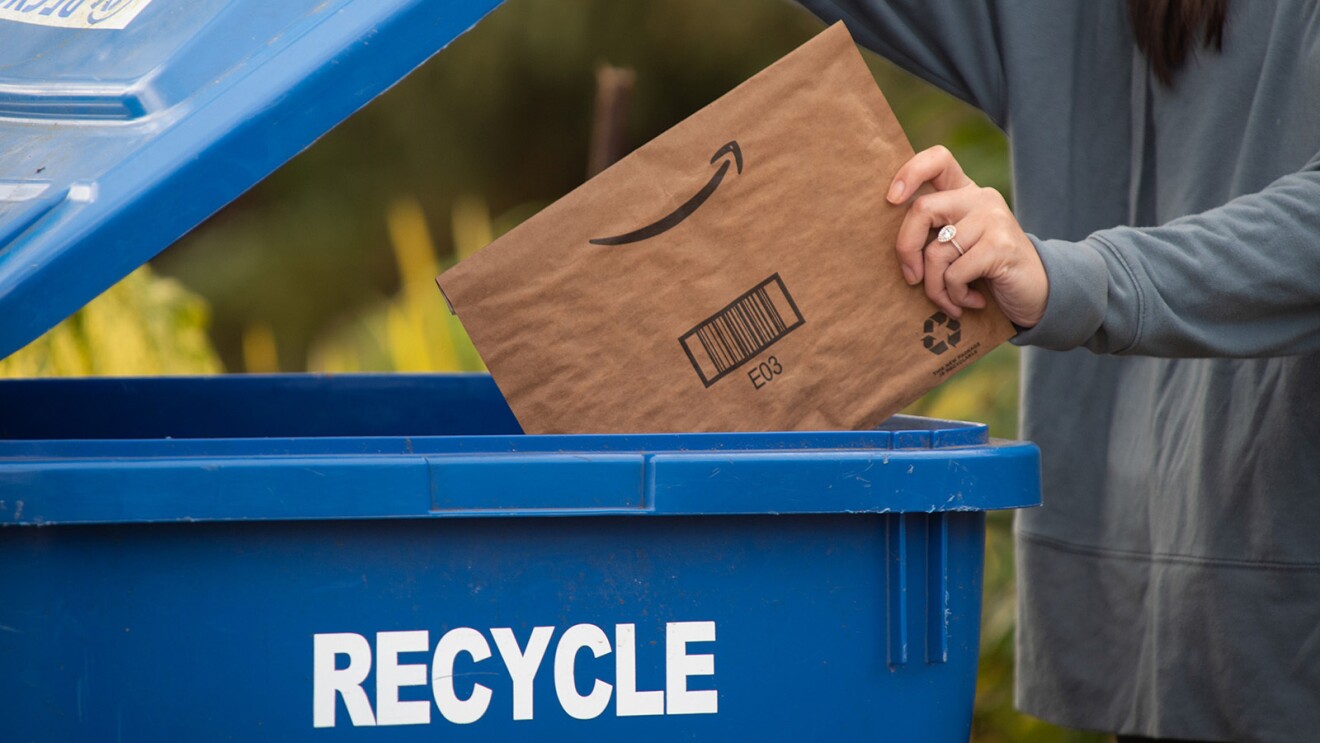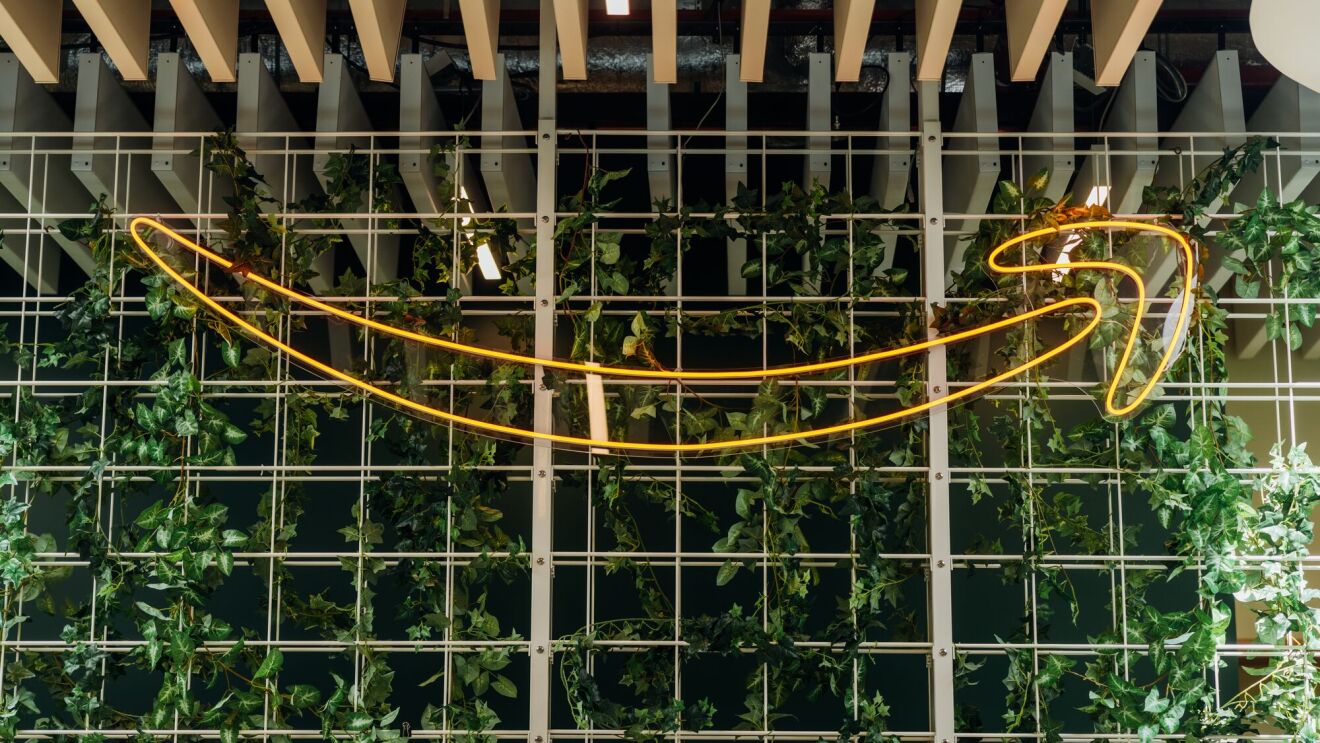When 12-year-old Róisín’s class was given the chance to name a nearby Amazon wind farm, she asked her granny for ideas. Róisín’s family has spent generations in Connemara, Ireland—a region on the Atlantic coast of western County Galway, where traditional Irish culture can be found everywhere from road signs to pubs. Together, Róisín and her granny came up with a wind farm name that serves as a symbol of the past and the future for their Irish community.
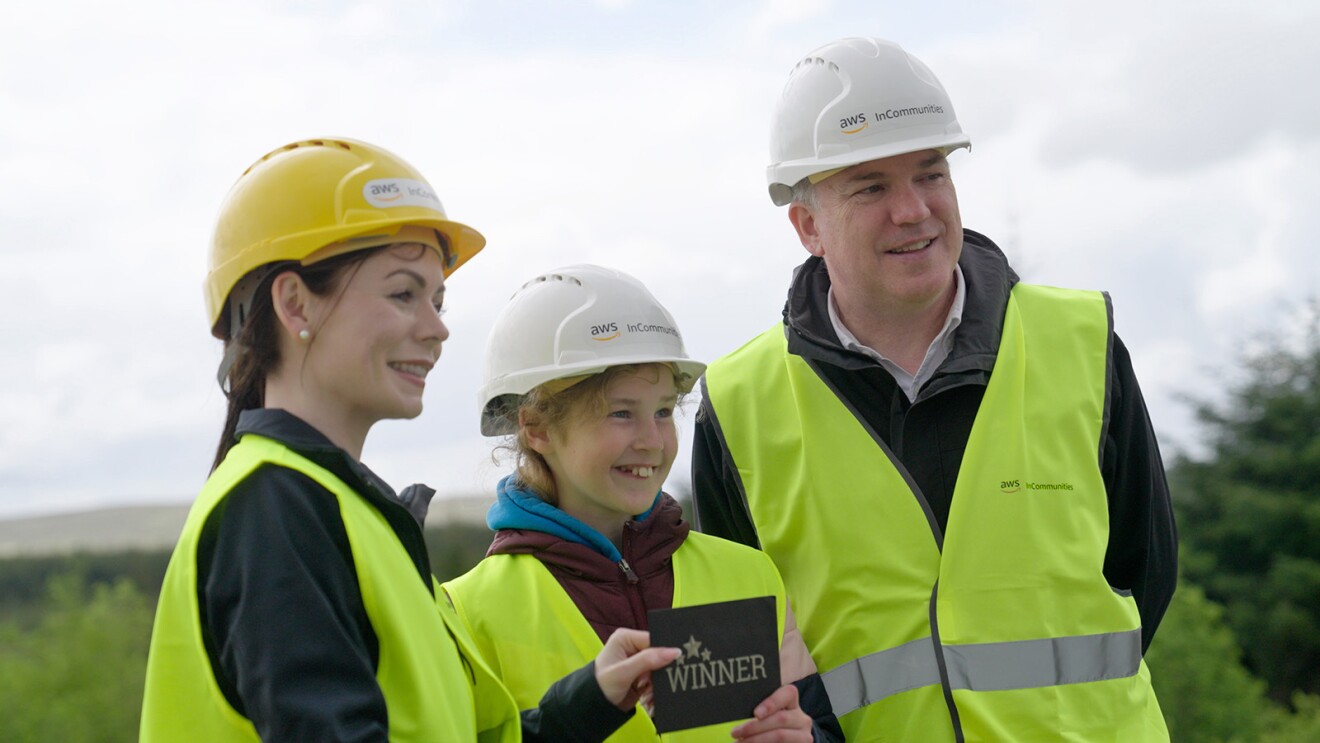 Róisín (center), receives her prize from Amazon employees for helping to name Amazon Wind Farm Ireland–Gusta Gaoithe.
Róisín (center), receives her prize from Amazon employees for helping to name Amazon Wind Farm Ireland–Gusta Gaoithe.“Ardderroo Wind Farm will henceforth be called Gusta Gaoithe Wind Farm, which means ‘gust of wind’ in the Irish language,” said Joanne Reynolds, Amazon community engagement manager, after announcing that Róisín’s suggestion was the winning name during her school trip to the wind farm. “We're really happy with the new name because the Irish language is very important in this local community.”
Connemara where the wind farm is located is Ireland’s largest Gaeltacht, or Irish-speaking, region. And while the region’s strong association with culture is preserving some of the country’s rich history, its use of a powerful natural resource is shaping the country’s future.
“The west coast of Ireland is one of the windiest places in Europe,” said Keith Palmer, Amazon energy operations manager. “Harnessing the wind energy in places like County Galway is a key component of securing a renewable energy future.”
To support the development of renewable projects in Ireland, Amazon was the first company to sign unsubsidized corporate power purchase agreements (CPPAs). This means that Amazon is adding renewable energy to the grid without direct government support, reducing subsidy costs on other local energy users. CPPAs allow wind farm developers, such as Invis Energy who developed the Amazon Wind Farm Ireland–Gusta Gaoithe, to finance and build a project that may otherwise not be built—building these types of projects is an enormous endeavor, especially in rural locations like this where access can be challenging.
 With the project due to come online later this year, crews assemble the final wind turbines at Amazon Wind Farm Ireland–Gusta Gaoithe.
With the project due to come online later this year, crews assemble the final wind turbines at Amazon Wind Farm Ireland–Gusta Gaoithe.“The scale of a wind turbine is hard to comprehend until you are up close,” said Palmer. “The turbines here at Ardderroo are 178 meters tall. To give some context, that’s one and a half times the height of the spire in Dublin and twice the height of the Statue of Liberty in New York. Getting turbine parts to construction sites is a feat of engineering that represents decades of innovation.”
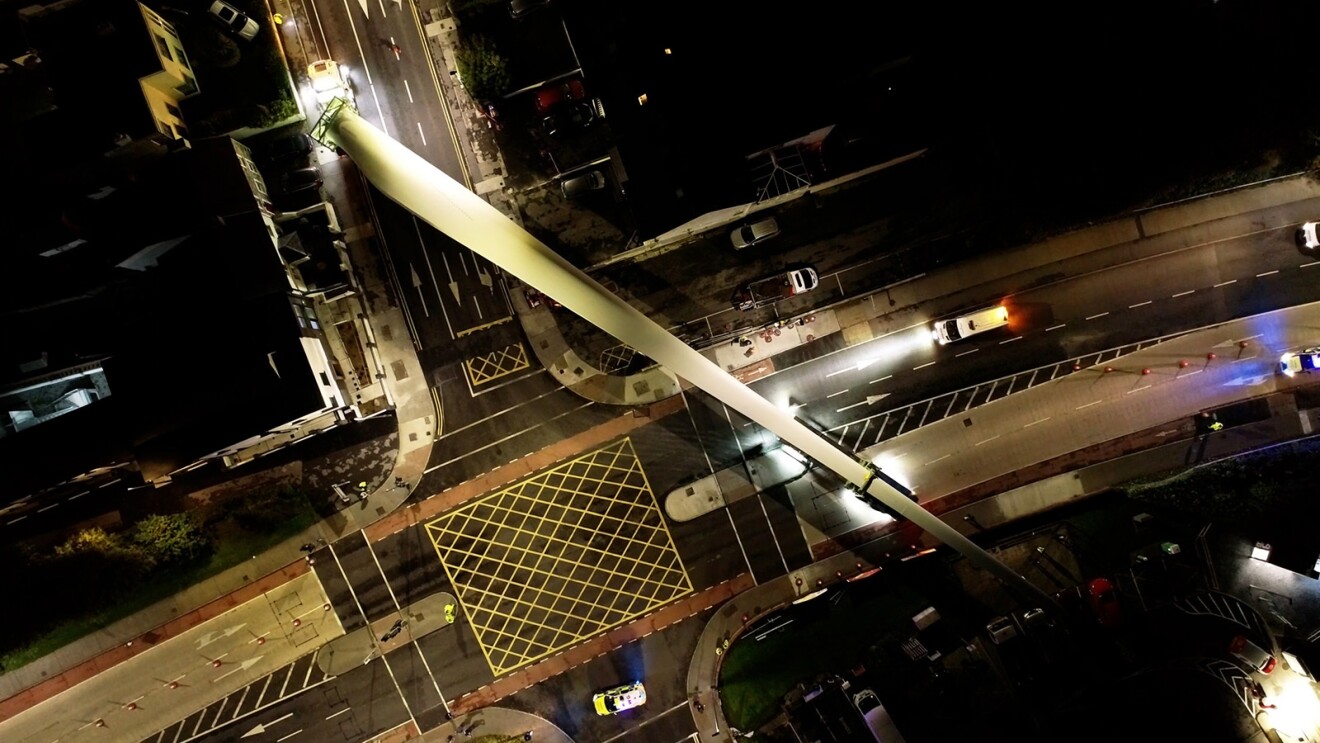 Specialized rigs navigate turbine blades around the tight turns in County Galway, Ireland.Photo by Invis Energy
Specialized rigs navigate turbine blades around the tight turns in County Galway, Ireland.Photo by Invis EnergyAlong with Gusta Gaoithe Wind Farm, which is due to come online later this year, Amazon has two other renewable energy projects in the country. In 2021, Ireland’s first-ever wind farm built without public subsidies came online in County Cork. The other project, in County Donegal, is due to come into operation in early 2024. Once operational, the three wind farms are expected to produce more than 670,000 megawatt-hours (MWh) of renewable energy for the Irish grid each year, which is equivalent to the energy needed to power roughly 160,000 homes annually.
The wind farms also provide benefits in the form of community funds that support local institutions like non-profits and schools. Amazon partners with developers to host tours for students where employees introduce careers in the renewable sector and the variety of skills that go into building and operating a wind farm. As a part of this program, Róisín and her classmates took a 20-minute bus ride through their town to see turbines up close.
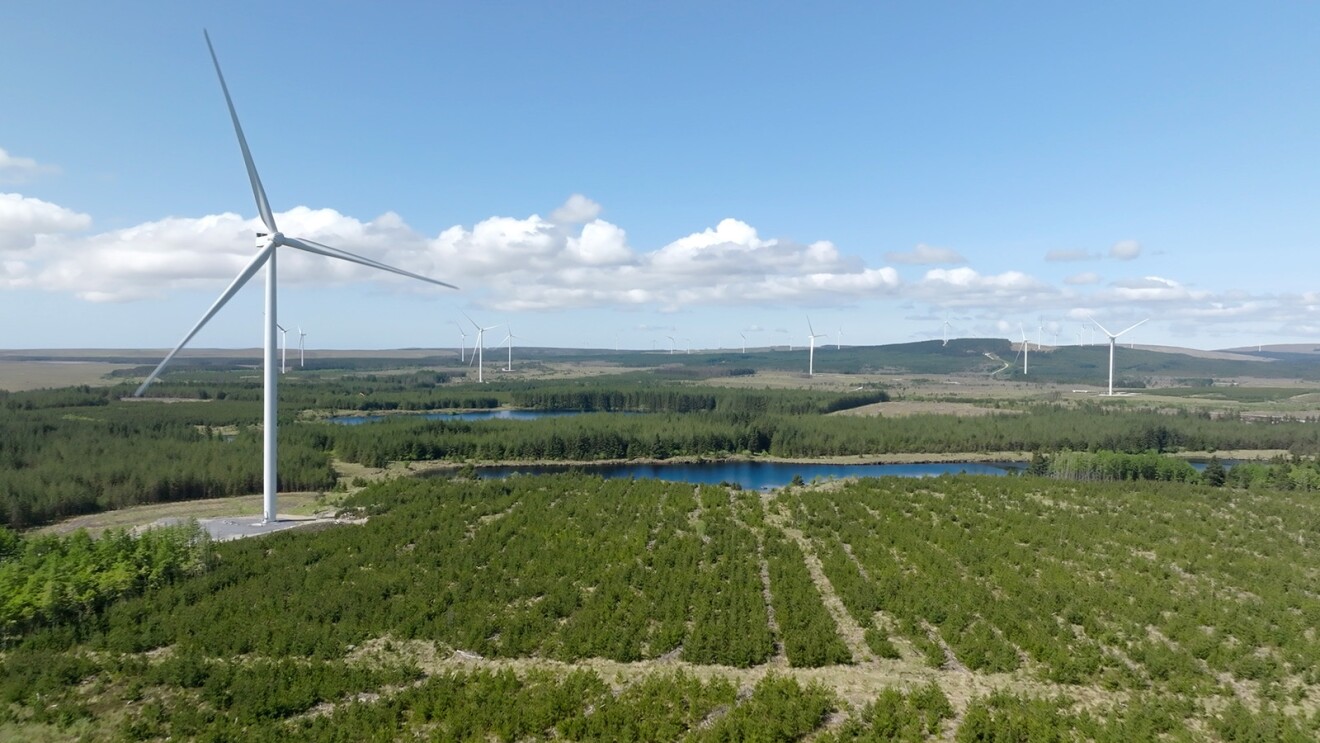 Amazon Wind Farm Ireland–Gusta Gaoithe will have 27 turbines that are projected to produce enough energy to power roughly 160,000 homes annually.
Amazon Wind Farm Ireland–Gusta Gaoithe will have 27 turbines that are projected to produce enough energy to power roughly 160,000 homes annually.“This wind farm and many other wind farms like it are where the students will be getting their energy in the future, so it's also our job to help them understand the importance of renewable energy for Ireland’s next generation,” said Reynolds.
Amazon’s investments in renewable energy projects across Ireland and the globe contribute to the company’s commitment to reach net-zero carbon by 2040 as part of The Climate Pledge. As the world’s largest corporate buyer of renewable energy with more than 400 clean energy projects announced around the world, Amazon is on path to power its operations with 100% renewable energy by 2025.
Trending news and stories
- Amazon unveils 7 new robots powering faster, safer deliveries: Go inside our most innovative delivery station yet
- Introducing Vulcan: Amazon's first robot with a sense of touch
- This new AI tech will make sorting packages easier for Amazon's delivery station employees
- 15 photos from Project Kuiper's first launch of low Earth orbit satellites






